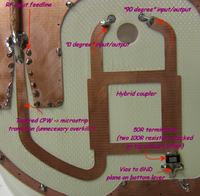sonia raj
Junior Member level 3

- Joined
- Apr 3, 2014
- Messages
- 27
- Helped
- 0
- Reputation
- 0
- Reaction score
- 0
- Trophy points
- 1
- Activity points
- 175
hello evryone..
how to delay one feed among two feeds by 90 degree using a hybrid coupler..how to design hybrid coupler..m working in cst.please anyone help me i m working on a project on circular polarization
how to delay one feed among two feeds by 90 degree using a hybrid coupler..how to design hybrid coupler..m working in cst.please anyone help me i m working on a project on circular polarization








